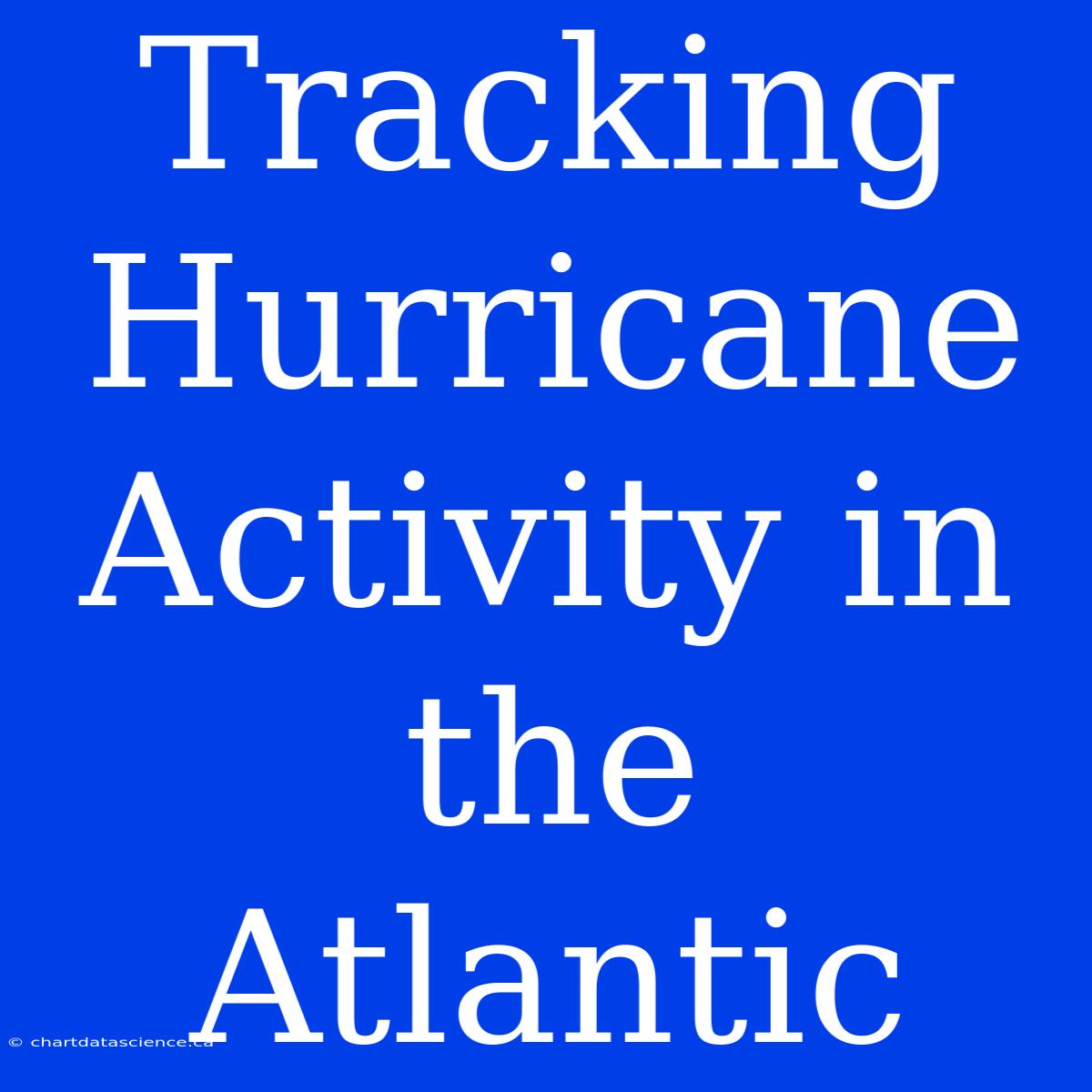Tracking Hurricane Activity in the Atlantic: A Guide to Staying Safe
Hurricane season in the Atlantic is a time of anticipation and anxiety for many, especially those living along the coast. The powerful storms can cause widespread damage, disrupt lives, and leave a lasting impact. But fear not, because with advancements in weather forecasting, we have a much better understanding of these tropical cyclones and how to track their progress.
What is a hurricane?
Hurricanes are powerful storms that develop over warm ocean waters, fueled by the energy released as water vapor condenses into clouds. The key elements that create a hurricane include:
- Warm Ocean Water: Temperatures of at least 80°F (26.5°C) are needed to provide the heat and moisture for hurricane formation.
- Low Wind Shear: Wind shear, the change in wind speed and direction with height, can disrupt a hurricane's formation. Low wind shear is crucial for the storm to develop a strong central structure.
- Pre-Existing Disturbance: A pre-existing weather disturbance, like a tropical wave, can provide the initial spin and organization needed for a hurricane to form.
How are hurricanes tracked?
Thanks to a global network of weather satellites, radar systems, and ground-based sensors, meteorologists can track hurricanes closely and provide accurate forecasts.
- Satellite Imagery: Satellites capture images of hurricanes from space, providing vital information about their size, structure, and movement.
- Weather Radar: Radar systems can detect the intensity and location of rainfall within the hurricane, helping to understand its strength and potential for flooding.
- Aircraft Reconnaissance: Aircraft equipped with instruments fly into hurricanes to gather detailed data about wind speed, pressure, and the storm's internal structure.
- Computer Models: Meteorologists use sophisticated computer models to predict the path and intensity of hurricanes. These models incorporate data from various sources to create forecasts that are constantly updated as new information becomes available.
Staying Safe During Hurricane Season
Being prepared for a hurricane is key to minimizing risks.
- Develop an Emergency Plan: Prepare a plan for your family, including evacuation routes, communication methods, and emergency supplies.
- Stay Informed: Monitor weather forecasts and alerts from trusted sources like the National Hurricane Center.
- Secure Your Home: Take steps to protect your home from hurricane damage, such as boarding up windows and securing loose objects.
- Have an Emergency Kit: Gather essential supplies like food, water, batteries, and a first-aid kit.
Understanding Hurricane Terminology
- Tropical Depression: A tropical cyclone with maximum sustained winds of 38 mph (61 km/h) or less.
- Tropical Storm: A tropical cyclone with maximum sustained winds of 39-73 mph (62-118 km/h).
- Hurricane: A tropical cyclone with maximum sustained winds of 74 mph (119 km/h) or higher.
- Saffir-Simpson Hurricane Wind Scale: This scale classifies hurricane intensity based on wind speed, ranging from Category 1 (weakest) to Category 5 (strongest).
By understanding hurricane formation, tracking systems, and safety precautions, we can better prepare for these powerful storms and minimize their impact. Staying informed, having an emergency plan, and following safety guidelines can save lives and protect property.

